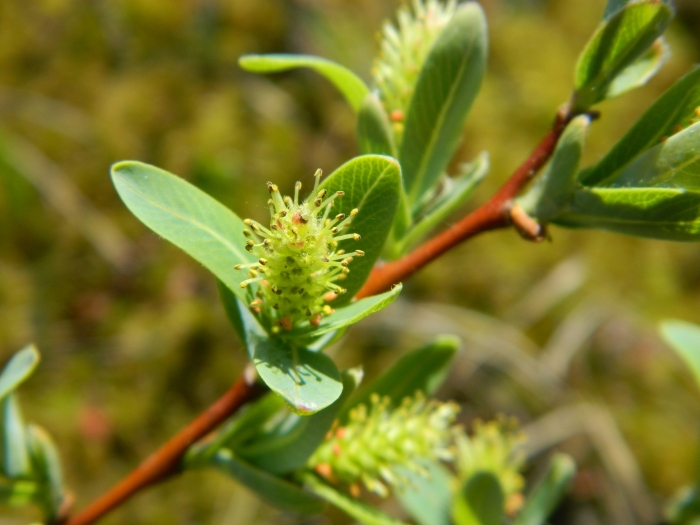Bog Willow
(Salix pedicellaris)
Bog Willow (Salix pedicellaris)
/
/

Louis Imbeau
CC BY 4.0
Image By:
Louis Imbeau
Recorded By:
Copyright:
CC BY 4.0
Copyright Notice:
Photo by: Louis Imbeau | License Type: CC BY 4.0 | License URL: http://creativecommons.org/licenses/by/4.0/ | Rights Holder: Louis Imbeau | Publisher: iNaturalist | Date Created: 2019-06-09T13:21:42-07:00 |

























Estimated Native Range
Summary
Salix pedicellaris, commonly known as Bog Willow, is a deciduous shrub native to the wetlands of North America, including bogs, fens, and swamps. It is particularly adapted to cold, northern climates and acidic, waterlogged soils. Bog Willow typically forms dense clumps and can reach heights of 3 to 6 feet (1 to 2 meters). The leaves are narrow, elongated, and have a fine texture. In early spring, before the leaves emerge, it produces catkins which are not particularly showy but are of ecological importance for early pollinators.
The Bog Willow is valued for its ability to thrive in wet conditions where many other plants cannot survive, making it useful for wetland restoration and erosion control. It is also important for wildlife, providing habitat and food for various species. In cultivation, it requires consistently moist or wet soil and can tolerate full sun to part shade conditions. While it is not commonly used in ornamental horticulture due to its modest appearance, it serves well in naturalized plantings and riparian buffers. Care should be taken when planting Bog Willow, as it is endangered or threatened in several states, and appropriate conservation measures should be observed.CC BY-SA 4.0
The Bog Willow is valued for its ability to thrive in wet conditions where many other plants cannot survive, making it useful for wetland restoration and erosion control. It is also important for wildlife, providing habitat and food for various species. In cultivation, it requires consistently moist or wet soil and can tolerate full sun to part shade conditions. While it is not commonly used in ornamental horticulture due to its modest appearance, it serves well in naturalized plantings and riparian buffers. Care should be taken when planting Bog Willow, as it is endangered or threatened in several states, and appropriate conservation measures should be observed.CC BY-SA 4.0
Plant Description
- Plant Type: Shrub
- Height: 3-10 feet
- Width: 4-12 feet
- Growth Rate: Moderate
- Flower Color: N/A
- Flowering Season: Spring, Summer
- Leaf Retention: Deciduous
Growth Requirements
- Sun: Full Sun
- Water: High
- Drainage: Slow, Standing
Common Uses
Bird Garden, Erosion Control, Low Maintenance, Water Garden
Natural Habitat
Wetlands of North America, including bogs, fens, and swamps
Other Names
Common Names: Peduncled Willow
Scientific Names: , Salix pedicellaris, Salix myrtilloides subsp. pedicellaris, Salix myrtilloides var. hypoglauca, Salix myrtilloides var. pedicellaris, Salix pedicellaris f. tenuescens, Salix pedicellaris subsp. hypoglauca, Salix pedicellaris var. hypoglauca, Salix pedicellaris var. pedicellaris, Salix pedicellaris var. tenuescens
GBIF Accepted Name: